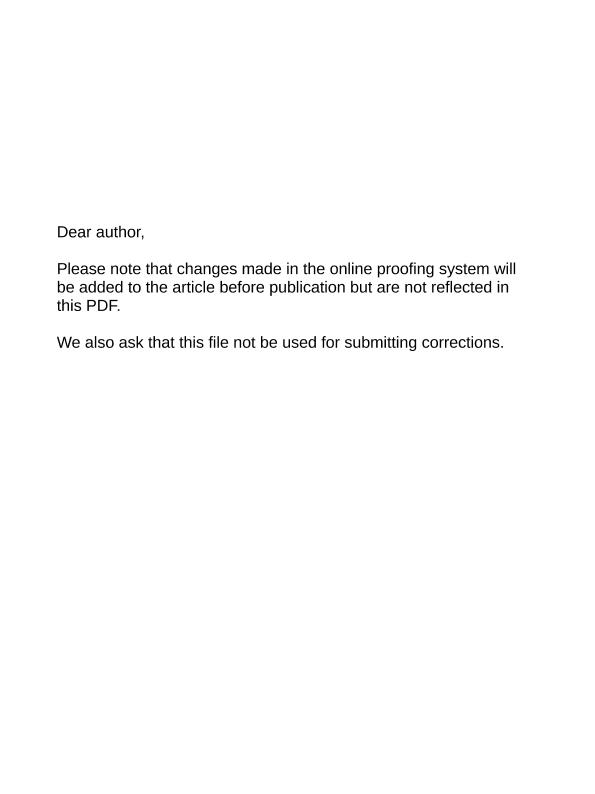Artículo
Hippocampal to basal forebrain transport of Mn 2+ is impaired by deletion of KLC1, a subunit of the conventional kinesin microtubule-based motor
Medina, Christopher S.; Biris, Octavian; Falzone, Tomas Luis ; Zhang, Xiaowei; Zimmerman, Amber J.; Bearer, Elaine L.
; Zhang, Xiaowei; Zimmerman, Amber J.; Bearer, Elaine L.
 ; Zhang, Xiaowei; Zimmerman, Amber J.; Bearer, Elaine L.
; Zhang, Xiaowei; Zimmerman, Amber J.; Bearer, Elaine L.
Fecha de publicación:
01/2017
Editorial:
Academic Press Inc Elsevier Science
Revista:
Neuroimage
ISSN:
1053-8119
Idioma:
Inglés
Tipo de recurso:
Artículo publicado
Clasificación temática:
Resumen
Microtubule-based motors carry cargo back and forth between the synaptic region and the cell body. Defects in axonal transport result in peripheral neuropathies, some of which are caused by mutations in KIF5A, a gene encoding one of the heavy chain isoforms of conventional kinesin-1. Some mutations in KIF5A also cause severe central nervous system defects in humans. While transport dynamics in the peripheral nervous system have been well characterized experimentally, transport in the central nervous system is less experimentally accessible and until now not well described. Here we apply manganese-enhanced magnetic resonance (MEMRI) to study transport dynamics within the central nervous system, focusing on the hippocampal-forebrain circuit, and comparing kinesin-1 light chain 1 knock-out (KLC-KO) mice with age-matched wild-type littermates. We injected Mn2+ into CA3 of the posterior hippocampus and imaged axonal transport in vivo by capturing whole-brain 3D magnetic resonance images (MRI) in living mice at discrete time-points after injection. Precise placement of the injection site was monitored in both MR images and in histologic sections. Mn2+-induced intensity progressed along fiber tracts (fimbria and fornix) in both genotypes to the medial septal nuclei (MSN), correlating in location with the traditional histologic tract tracer, rhodamine dextran. Pairwise statistical parametric mapping (SPM) comparing intensities at successive time-points within genotype revealed Mn2+-enhanced MR signal as it proceeded from the injection site into the forebrain, the expected projection from CA3. By region of interest (ROI) analysis of the MSN, wide variation between individuals in each genotype was found. Despite this statistically significant intensity increases in the MSN at 6 h post-injection was found in both genotypes, albeit less so in the KLC-KO. While the average accumulation at 6 h was less in the KLC-KO, the difference between genotypes did not reach significance. Projections of SPM T-maps for each genotype onto the same grayscale image revealed differences in the anatomical location of significant voxels. Although KLC-KO mice had smaller brains than wild-type, the gross anatomy was normal with no apparent loss of septal cholinergic neurons. Hence anatomy alone does not explain the differences in SPM maps. We conclude that kinesin-1 defects may have only a minor effect on the rate and distribution of transported Mn2+ within the living brain. This impairment is less than expected for this abundant microtubule-based motor, yet such defects could still be functionally significant, resulting in cognitive/emotional dysfunction due to decreased replenishments of synaptic vesicles or mitochondria during synaptic activity. This study demonstrates the power of MEMRI to observe and measure vesicular transport dynamics in the central nervous system that may result from or lead to brain pathology.
Palabras clave:
Transporte Axonal
,
Manganese
,
Brain Imaging
Archivos asociados
Licencia
Identificadores
Colecciones
Articulos(IBCN)
Articulos de INST.DE BIOLO.CEL.Y NEURCS."PROF.E.DE ROBERTIS"
Articulos de INST.DE BIOLO.CEL.Y NEURCS."PROF.E.DE ROBERTIS"
Citación
Medina, Christopher S.; Biris, Octavian; Falzone, Tomas Luis; Zhang, Xiaowei; Zimmerman, Amber J.; et al.; Hippocampal to basal forebrain transport of Mn 2+ is impaired by deletion of KLC1, a subunit of the conventional kinesin microtubule-based motor; Academic Press Inc Elsevier Science; Neuroimage; 145; Part A; 1-2017; 44-57
Compartir
Altmétricas



